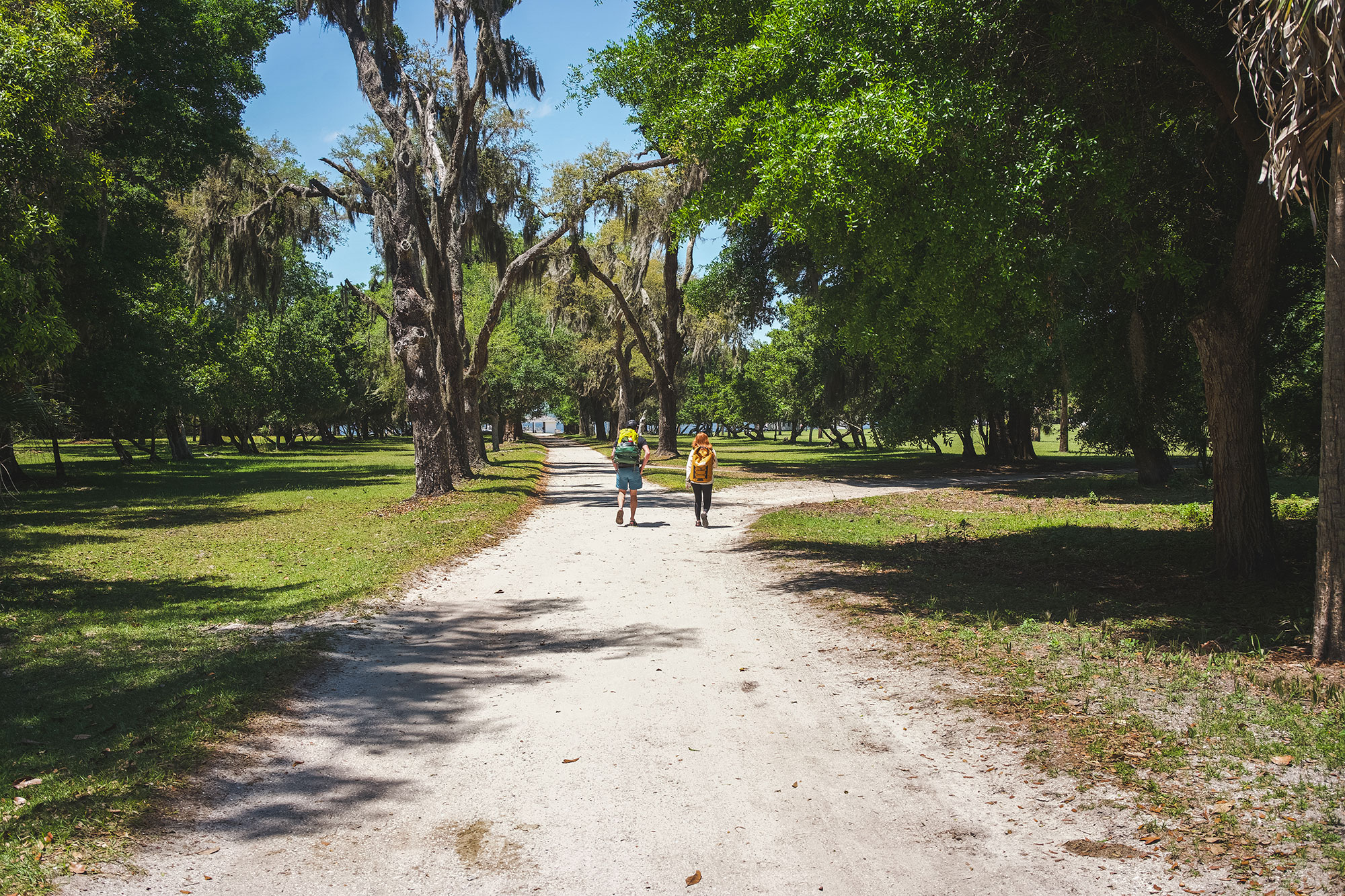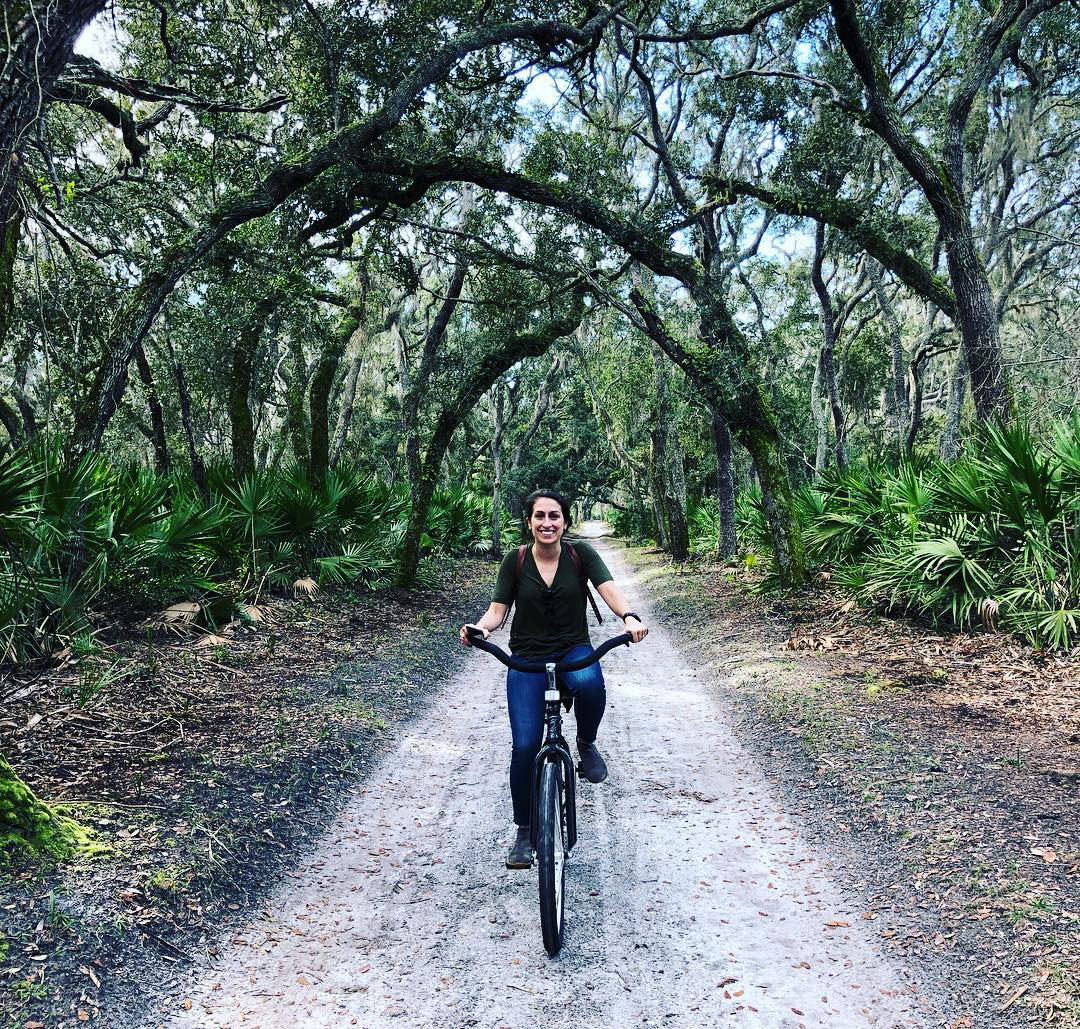Guide to Navigating Cumberland Island
Getting to and around this remote island off Georgia's coast calls for some advance planning. Follow these tips to prepare a transportation plan for your adventure.
Cumberland Island National Seashore’s countless trails, historic sites, and miles of coastline beckon intrepid travelers who seek out enchanted lands and awe-inspiring natural beauty. A visit to Georgia’s largest barrier island calls for some planning well in advance, but the time you spend planning will be well worth it.
Start by deciding what you’d like to see and do on Cumberland Island. Would you like to go camping for a few days and sleep under an infinite blanket of stars? Or, do you want to go for a day trip to catch glimpses of wild horses, explore scenic ruins and wander on the expansive beach? Are you interested in touring the island’s historic sites with a guide, or would you like to experience the unspoiled island’s ecology and enchanting maritime forest on your own? There are countless things to see and do, making this national treasure a place you’ll want to visit again and again.
Once you know what you want to do, it’s time to start planning your trip to the island. Use the transportation tips below to get a better idea of how to find your way around Cumberland Island and uncover all the surprising splendor it has to offer.
How to get to and from Cumberland Island
Unlike on other barrier islands in Georgia, cars are not an option for getting to or around Cumberland Island. There are two options to get to the island: catching a ride on the passenger ferry (not a car ferry) or, if you know the ropes, you can choose to voyage over on your own private boat.
Cumberland Island Ferry
On arrival to downtown St. Marys, visitors taking the ferry — both day trippers and campers — should park at the Cumberland Island parking lot, which is located one block west of the mainland visitor center. The passenger ferry provides a scenic round-trip ride to Cumberland Island and is available year-round. But, the schedule changes seasonally, so be sure to check as you plan your trip. To guarantee your seat to the island is secured, it’s best to make ferry reservations before your trip, which you can do up to six months in advance.
After the 45-minute picturesque ferry ride, passengers disembark at either the Dungeness dock or Sea Camp dock. For easy access to Dungeness Ruins and the Historic District, you’ll want to get off at the first stop. Campers, those taking the Lands and Legacy guided van tour, and visitors with bikes will disembark at Sea Camp dock.
Private boats
Visitors can dock their personal boats on the north end of Sea Camp and Dungeness docks, except as marked. All of the Plum Orchard dock is open to private boats; however, space is limited and cannot be reserved. There is no overnight docking, and visitors may not charter boats to get to the island.
Transportation options on Cumberland Island
With more than 50 miles of trails and roads, 17 miles of uninterrupted beach, and five campgrounds, Cumberland Island is a coastal explorer’s wonderland. The island has two main sections: the south end — where you’ll find the Dungeness Ruins, Ice House Museum, and Sea Camp dock — and the north end, where you’ll find Plum Orchard Mansion and the Settlement.
Day trippers and hikers will find some of the island’s most dramatic scenery on the south end and can choose to experience it on a guided tour or solo. Hiking to the north end — a 14-mile, round-trip journey — is a trek worth taking if you plan to stay overnight, but day trippers will find there isn’t enough time to get there and back before it’s time to catch the ferry back to the mainland. To get to the north end on a day trip, consider taking the Lands and Legacy Tour or bringing a bike.
Tours
Want to get the inside scoop on the island from experts who know better than anyone? Then, be sure to sign up for one of Cumberland Island’s tours. You can choose between a guided van tour or two walking tours.
For history and nature lovers, The Footsteps Tour, a 1.5-mile walking tour led by park rangers, explores the Dungeness Historic Area, including the Dungeness Ruins. The 60- to 90-minute tour uncovers the stories of the people that once lived on the island and the events that shaped its history. The tour is offered only when staff is available, so check before your trip to confirm its status on the day you plan to visit.
Molly’s Old South Walking Tours of the Dungeness Historic Area are offered every day the ferry runs. The one-mile, story-filled walk begins at the Dungeness dock. Tickets are sold separately from the ferry tickets and park entrance fee.
The Lands and Legacy Tour is a full-day tour that begins at Sea Camp Ranger Station and taxis passengers via van to cultural and historic landmarks across the island. The van has an ADA-standard lift and can accommodate up to two wheelchairs. The five- to six-hour trip is the only motorized tour on the island making it the perfect option for day trippers who want to see more of the island. You’ll visit sites like Plum Orchard Mansion, the Settlement (including the First African Baptist Church), Cumberland Island Wharf, and others along the main road. Stay on the lookout for sightings of feral horses, armadillos, wild turkeys, and more creatures that call the biodiverse island home. Space is limited, so be sure to book your tour in advance.
Hikes
If solo exploration is more your speed, there are countless trails to traverse at your leisure. The most popular route is the 4.3-mile Southend Loop, which is a great way to see the island’s iconic scenery. The trail winds alongside the waterfront, offering a rare glimpse of the beach from a slight elevation and a prime location for birdwatching or spotting dolphins. On a clear day, hikers can see all the way to Amelia Island and enjoy stunning views of where the St. Marys River separates Georgia and Florida.
Bikes
To cover more ground, biking is a great way to explore the island. BYOB or arrange a rental from Camden Bicycle Center to meet you at the ferry (on-island bike rentals aren’t currently available). Bikes are allowed on the ferry for an additional $10 fee, but space is limited, so be sure to make reservations if you’re bringing any bikes. E-bikes are allowed as long as they are pedal-assist only and less than 1 horsepower (750 watts). All roads are sandy, so make sure to equip your bike with appropriate tires.
Wheelchairs
Three all-terrain beach wheelchairs with balloon tires are available and can be reserved while making ferry reservations. The non-motorized wheelchairs are designed for ease of movement on the island’s sandy trails. At Dungeness dock, wheelchair-accessible points include the ferry ramp, museum, restrooms, and the River Trail, which has a fairly level surface and is wide enough to accommodate beach wheelchairs. The Sea Camp dock’s wheelchair-accessible amenities include the ranger station, restrooms, and interpretive talks.
For more information
With your reservations made and your list of things to see and do, you’re ready to head to Cumberland Island. Be sure to download the National Park Service mobile app for interactive maps, on-the-ground accessibility information, tours of park locations, and more planning tools for your trip. It’s a valuable resource to use before and during your visit to Cumberland Island.








